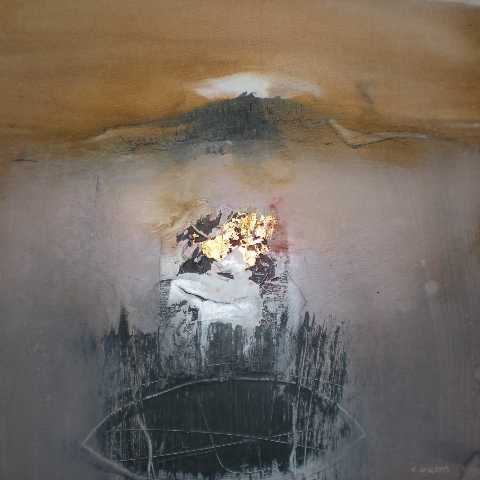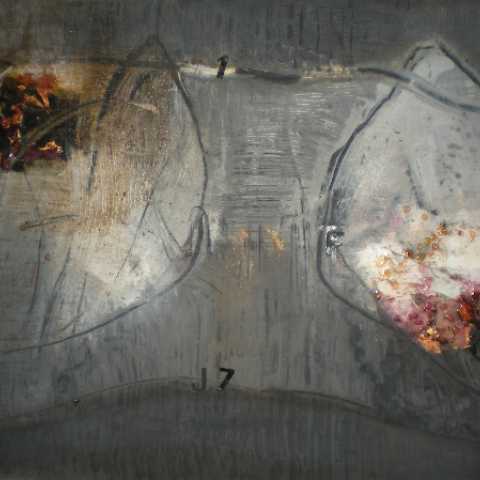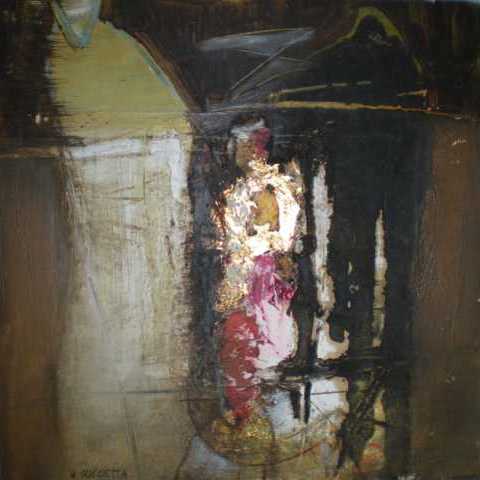Date From
Date To
Admission fees
Free
Gallery
Maverik Showroom
Address
68-72 Redchurch Street
London
E2 7DP
United Kingdom




Maverik Showroom is proud to present the first UK solo show of the Italian painter Walter Cocetta. All of his paintings are born from deep evocative basis and he uses his painting and chromatic techniques in a symptomatic way. That is to say, not illustrative, so as to not force the evocative aura of a representation which is not based on what the eye sees but what one sees emotionally in a narrow naturalistic representation. From here, derives every brush stroke, every picturesque sign, every lump of material, every scansion of space is given a symbolic meaning which is brought back to the fundamental components of the picturesque language which are the brush strokes, the sign, space, colour organised on the surface so as to evoke more about what the public feels than what they see. It is time to remember that all the paintings, even when the artist inspires himself from the reality that he sees, are a language, which symbolically represents what the eye sees and perceives as tangible. An example is seen in iconic painting, frequently defined as tangible. An example seen in iconic painting, frequently defined as figurative, unit has to recur to light and shade, perspective and other, tricks of the trade to give back the illusion of reality, which could be that of a landscape, a group of objects, a portrait or group of people in various poses. Reality can never be totally restored. It is therefore an interdiction which not only regards painting but all the expressions of art, which ore in fact symbolic: existential or historical events, like a novel, sight, like a painting; physicality, like a sculpture, sound, like music, emotions, like poetry; life, like a play, movement, like dancing, existential space, like architecture and so on. This is why each one of the expressions of art have their own language which fluctuate between description or illusion and evocative or conceptual, but it is always symbolic. It is clear that in the image of painting the symbolic aspect is almost hidden in the mimicry of reality, while such an aspect is more likely to be found in imageless paintings, that is, in Anionic paintings which Cocetta is now a large part of. Today he is one of its great pillars. His paintings, therefore must be interpreted according to certain rules, which evoke and speak of symbolism, throughout the years, their morphologies have coagulated until the existing technicalexpressive tendency, which has kept up with the aesthetic-poetic one. Based on these indications one can understand why Cocetta refers to 'man†by using the number 1 and not by painting the image of a body as he once used to do. At the same time, this is a symbol of one's individuality and a sign of painting, a sign in the spaces of its evocation, where between shade and semi-darkness of the existence of these tormented times (planetary events have continuously stimulated Coccetta's imagination and an example of this can be seen two years ago during the painful events of Bosnia) are sudden flashes of light, full of hope. Hope that that the light of reason returns within man and the world. Shade and semi-darkness were the elements of Coccettas's paintings until he went to Malta, in this Mediterranean island, Walter found the light, the light that he was trying and hoping to find inside of him. This enlightened his eyes and spirit. This recognition couldn't but be transferred into his paintings. In fact, his palette has brightened up because of the Mediterranean light within which he was immersed, but not only for this reason. He was welcomed with such warmth and friendliness in Malta and continues to tell stories of his emotional and enthralling experience with the people of the island. Malta was, therefore a type of total illumination for him, similar to Klee's experience in Africa. Naturally, Coccetta has reacted in different ways from the great Swiss-German artist. Coccetta has been used to elaborate manipulations of mud in his paintings and he found new dimensions in Malta (by observing the name of the island 'Maltaâ€, it could have been destiny -' Malta†also means mud in Italian) through the use of pictorial materials to inculpate Malta's golden light in the mud. This was for Coccetta a real 'nomen / numenâ€. The paintings from the series 'Malta-Light†synthesise (always evocatively, of course) what was said in the outstanding series ' A storyâ€, where not only did the real sand play a real part in brightening up a palette, but also the new spatial dimension determined by the light and its diffusion, the enlarged brush strokes and sometimes, recuperating with 'tachistes†or with 'drippingâ€, has brought up again the discussion about the identity of the signâ€1†which has now become more pictorial in suggestive exaggerations and now, graphically cursive in quick minimal black, red or blue notes. Probably, in this dichotomous situation, this numerical sign is starting to be re-absorbed for the genesis of a new language dominated by a more elementary and universal new sign which is not to descriptive. By Giorgio Di Genova maverik showroom
